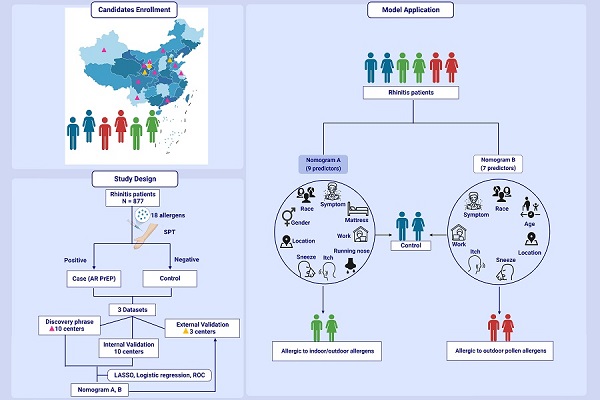Abstract
Background: Few risk-forecasting models of allergic rhinitis (AR) exist that may aid AR pre-exposure prophylaxis (PrEP) in clinical practice. Therefore, this study aimed to develop and validate an effective clinical model for identifying candidates for AR PrEP using a routine medical questionnaire.
Methods: This study was conducted in 10 Chinese provinces with 13 medical centers (n=877) between 2019 and 2021. The least absolute shrinkage and selection operator model was used to identify potential risk factors for AR, and the logistic regression model was used to construct the risk-forecasting model.
Results: This study diagnosed 625 patients with AR who had positive responses to at least one indoor or outdoor allergen and 460 to at least one outdoor pollen allergen.  Two nomograms were established to identify two types of AR with various sensitization patterns. Both models had an area under curve of approximately 0.7 in the development and internal validation datasets. Additionally, our findings found good agreement for the calibration curves of both models.
Two nomograms were established to identify two types of AR with various sensitization patterns. Both models had an area under curve of approximately 0.7 in the development and internal validation datasets. Additionally, our findings found good agreement for the calibration curves of both models.
Conclusion: Early identification of candidates for AR PrEP using routine medical information may improve the deployment of limited resources and effective health management. Our models showed good performance in predicting AR; therefore, they can serve as potential automatic screening tools to identify AR PrEP candidates.